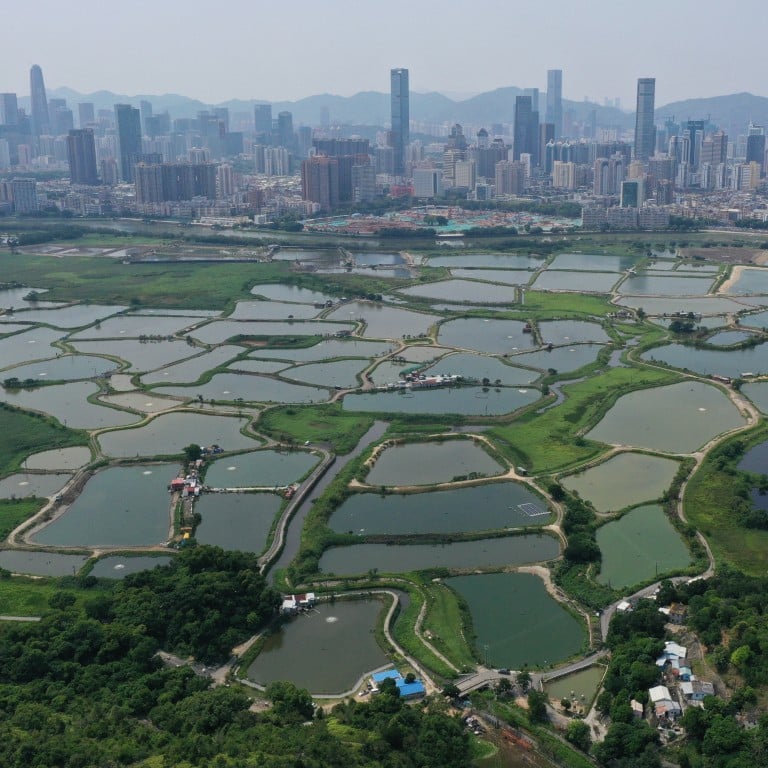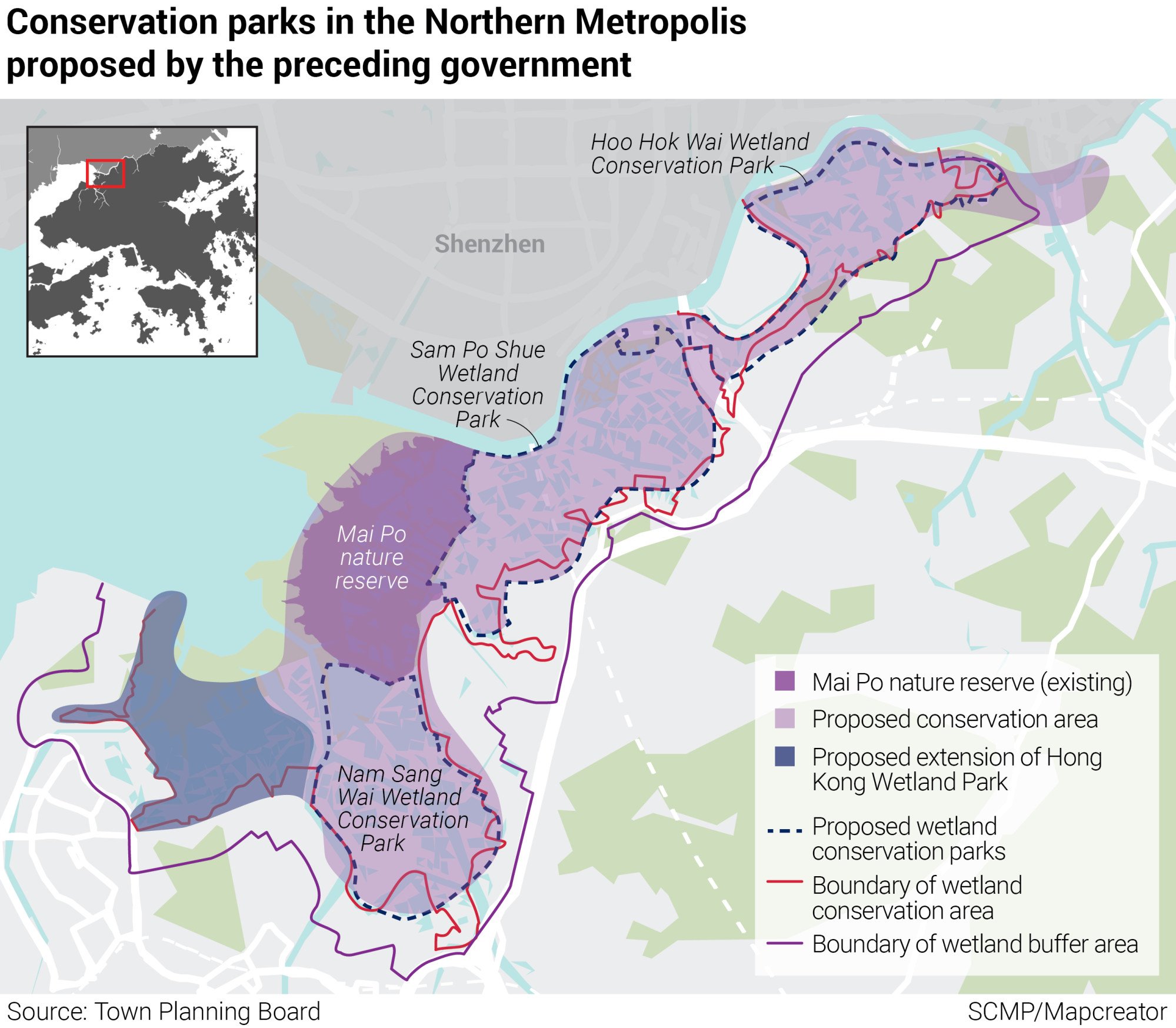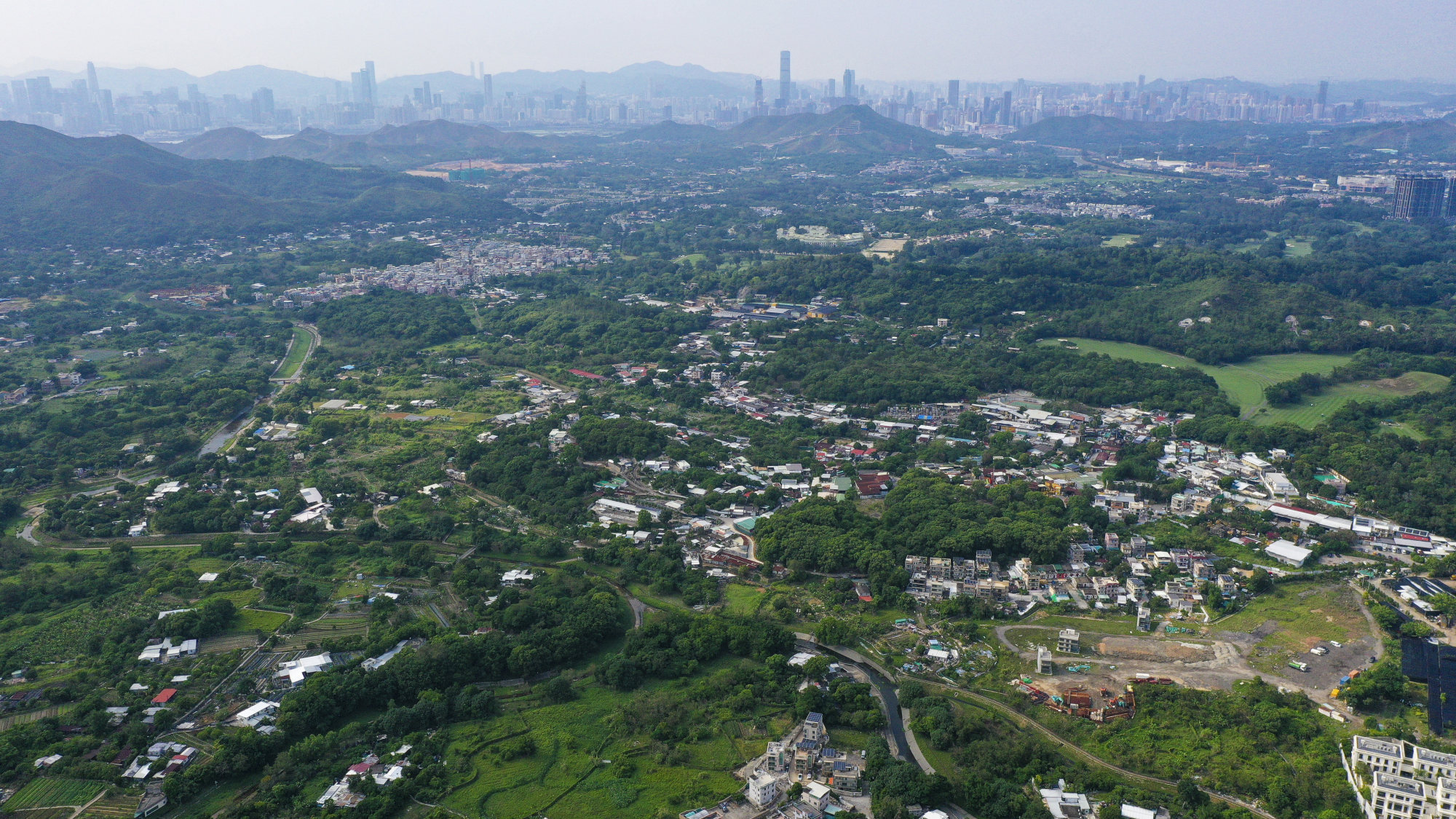
Hong Kong’s Northern Metropolis master plan, explained: how the bold proposal to build a new I&T hub will drive integration with Shenzen and the Greater Bay Area
- Up to 900,000 new homes are slated to be built over the next 20 years as part of the proposals to create a new economic hub focused on innovation and technology (I&T)
- While many question marks remain, progress is expected to speed up following the appointment of Vic Yau Cheuk-hang as of lead the new Northern Metropolis Coordination Office
Hong Kong’s plans to develop a large swathe of its territory as a Northern Metropolis are nothing if not bold. In broad outline, they call for the transformation of roughly 30,000 hectares of land into a new economic hub focused on innovation and technology (I&T), intended to drive further integration with Shenzhen and the Greater Bay Area (GBA).
The initiative is expected to span today’s Yuen Long, Tin Shui Wai and Sheung Shui, as well as neighbouring rural areas and current “new development areas” (NDAs) such as Fanling North and Ping Che, Ta Kwu Ling.
Change, though, is writ large, with the holistic concept for the mega-project also aiming to upgrade infrastructure, attract other industries, enhance community facilities, and boost housing supply with the construction of up to 900,000 new homes over the next 20 years or so.
It is a lot to digest and may seem a long way ahead.
However, the recent appointment of government official Vic Yau Cheuk-hang to lead the newly-established Northern Metropolis Coordination Office (NMCO) is the clearest sign yet that wheels are starting to turn.

The basic task set for the NMCO is to oversee planning and draw up a road map for development within the year. Its initial statement admits that it is a “mammoth undertaking”, which will require close liaison with bureaus and departments responsible for everything from housing supply and industry, to transport and ecological conservation.
The office also accepts the need to come up with innovative plans and land policies, and to engage with residents and mainland authorities.
Of course, with the NMCO set to swing into action, it sends a signal to all the other stakeholders – and there are many – to for what lies ahead.
Companies, whatever their size and sector, will be turning thoughts to the potential business and investment opportunities. Other groups will be raising valid questions about costs, funding and who gets a slice of the cake. Academic experts and the Hong Kong public will also want to know how all this proposed development can realise promises to limit environmental impact, support a greener economy, and activate low-carbon lifestyles.
Whether spurred by enthusiasm, concern or other imperatives, some organisations have wasted no time in stepping forward with advice and recommendations. For instance, in the latest of a series of reports, Colliers Hong Kong took a closer look in mid-June at the early plans for the San Tin Technopole, a 627-hectare area within the Northern Metropolis.
The Development Bureau has previously suggested the government could earmark 300 hectares near the mainland border for I&T enterprises and would consider adopting direct land grant methods, rather than open tendering in providing sites for interested organisations.
Given the massive scale of the project and the fast-changing nature of the tech industry, Colliers says flexibility is the key.
In this case, it means having mixed land disposal mechanisms for the various phases of the development cycle. There could be direct land grants or private treaty grants in the initial phase, succeeded by restricted tender, two-envelope (for proposal and pricing)] public tender, or public-private partnership (PPP) later on.
“Through PPP, the Northern Metropolis project can leverage private sector capital and expertise from I&T enterprises, while reducing pressure on public finance for a better allocation of risk,” said Kathy Lee, head of research at Colliers Hong Kong.

The report also emphasised the need for a competitive land price policy. The priority should be to create “affordable I&T space” without compromising public interest. And suitable measures should be in place to monitor the proper use of land and ensure all-round fairness.
In deciding on strategies in the crucial early stages, it also pays to have an in-depth understanding of the unique spatial and service requirements of companies in the target sectors – most likely small-to-medium-scale manufacturing, R&D, biomedicine, AI and data science.
With that in mind, Colliers HK also suggests shortening the tenure term for Technopole land grants from 50 to 30 years, allowing flexibility in plot ratios and floor area arrangements, and incorporating all the facilities necessary to create a “human-centred community”.
Missteps can then be avoided, in particular the most painful: selling a grand vision which has insufficient appeal for investors, developers and intended users.
Approaching from a different angle, academics at Hong Kong University of Science (HKUST) and Technology’s Institute for the Environment have also been quick to share opinions on the way ahead for the Northern Metropolis.
In a joint paper, the chief concern for Lu Zhongming, associate professor at HKUST’s Division of Environment and Sustainability, and Faith Chan, associate professor at the University of Nottingham Ningbo, is not to squander the opportunity to make the project carbon-neutral, climate-resilient, resource-efficient, and truly “liveable”.

It all starts, the authors note, with good planning, and depends on a highly transparent and collaborative process. This should involve both public and private sectors, seek input from academics, business leaders and affected communities, and make appropriate use of green finance, digital technologies, and global platforms which offer nature-based solutions for people working on the design and construction of the built environment.
By committing from the outset, the way is open to achieving ambitious sustainability targets and being an exemplar for other cities in China and around the world.
Lu and Chan make the point that commercial buildings consume a very significant portion of the electricity used in Hong Kong. However, proper planning and the correct measures can make buildings very energy-efficient, with an immediate knock-on effect on the wider urban scale.
For maximum benefit, though, the supplier must provide “clean” electricity generated by the least polluting methods, while the distribution system and the buildings themselves must be highly efficient. That might seem a tall order, with few if any truly zero-carbon high-rises to be found, but plenty of architects and developers know it is doable.
With regard to the Northern Metropolis, Lu and Chan have no doubt: “It is clear that Hong Kong has the talent to create such buildings. The incentives need to be there for them to flourish. Policymakers need to craft the right policies and incentives.”
